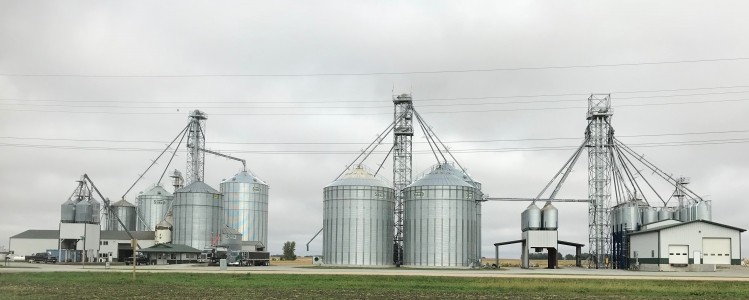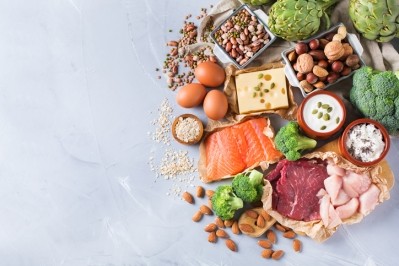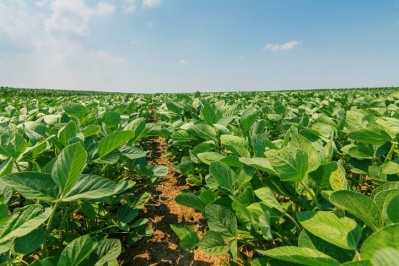Feed ingredients remain challenge for organic feed industry

Overall, sales for organic products in the US expanded by 6.4% in 2017 from the previous year, according to statistics from the Organic Trade Association. Organic food sales have increased from about $3.4bn in 1997 to more than $45bn in 2017.
Sales of organic eggs and dairy are the second largest segment and saw returns of $6.5bn last year, the OTA reported.
Yorktown Organics, in Tampico, Ill. has been one of the poultry feed producers supporting the domestic growth in organic egg production, said Ralph Kropf, company owner.
The feed mill started when producers in the area turned to specialty production and were seeking a source for organic feed, he told FeedNavigator. “There was no feed source in northern Illinois for organic production – they were bringing it from 200 miles away,” he added.
Since that point in the early 2000s, the company’s production of poultry feeds – complete feeds for layers, chicks and broilers – has reached about 50,000 tons annually, he said. “We supply feed to over 10% of the organic eggs that go on the shelf in the US,” he added.
Poultry remains the primary animal organic production looking for feed in the region, he said. “There’s very little dairy down here and almost no pork production in it at all,” he added.
“It’s all poultry – that’s the only business here,” he said. “We specialize in that and we try to do what we do well. We’ve been very successful doing that.”
Organic expansion
Working with organic feed has been a “worthwhile” business, said Kropf.
However, health challenges changed his interest in the industry, he said. “Interest in this organic business has taken a different view, it’s at a personal level besides just a business standpoint,” he added.
On the business side, the expansion in the call for organic poultry feed has driven expansion in facilities, he said. “Egg production has come up quite rapidly, and we’ve expanded facilities to try and keep up with that,” he added.
The original mill was constructed in 2005, and renovated several times before a second production facility was constructed in Afton, Iowa in 2013, he said. In 2015 the company built a new mill at its initial location and transitioned the original mill into an organic soybean crush facility.
In addition to supplying organic producers in Illinois, Yorktown’s footprint includes Iowa, southern Wisconsin and Northern Missouri, said Kropf. A related, but separate, company is located in Missouri and works with producers in southern Missouri, Arkansas and Texas.
“It’s a niche market that I’ve managed to fill,” he said. “I’ve been fortunate to ride the wave – it’s grown quite rapidly in recent years,” he said.
Paperwork and supplies
There have been some challenges tied to the production of organic feed, said Kropf.
There can be a large amount of paperwork and recordkeeping, he said. But, when the Feed Safety Modernization Act (FSMA) started taking effect many of its requirements overlapped with organic paperwork, although there were some additional elements.
“Organic and food safety goes hand-in-hand, and what works for one works for the other,” he said.
The largest challenge at this stage remains supply of feed ingredients, said Kropf. Finding feed grains, especially produced in the US, continues to be problematic.
“Up until about last year, we only raised about 75% of the corn we need to feed the organic poultry in the US and only about 10% of the soybeans,” he said of total US organic feed crop growth. “So 90% of the soybeans, soybean meal, whatever we choose to bring in is being raised internationally and is being brought in as imported product.”
Yorktown focused on sourcing all its feed corn from domestic producers, he said. A practice that has become easier in recent years.
“I’ve found that corn keeps getting easier every year more and more farmers are switching to organic production,” he said. “This year we’ve got a good supply in the Midwest, and we’re shipping a lot to the coast trying to help the guys on the coast out… as times goes on, the organic supplies are getting a lot more available in the Midwest on the corn side – soybeans we’re just so very short that it’s difficult.”
“There’s not enough in the US to even get close to supplying us,” Kropf said of soybeans. “We’re very selective on what we import, but we do import soybeans from India, exclusively from India. We do not use Eastern European products just because of the integrity questions that we run into.”
Previously, there have been public questions raised about imported feed ingredients being falsely labeled as organic.
The issue has been “over-exaggerated” but it is a “legitimate concern,” said Knopf. “There has been some cheating happening – so you have to be careful about who you use,” he added.
“The import thing is the biggest question and the biggest negative publicity that we deal with,” he said. “We really need to get to where we have consumer confidence again – we’re doing our best to try and weed out the cheaters and produce a product that we can stand behind and say we know that’s really organic.”
“That’s the reason why I buy domestic corn because I know my farmers that I’m buying from, I know I can trust them,” he added.
However, for soybean it will take years to add the amount of domestic production needed to address the organic feed industry’s current needs, he said. “We need 400,000 acres of organic soybeans to go in to supply what we’re short right now,” he added.
“There is a lot of work that goes into raising organic soybeans,” said Kropf. “I understand why they don’t want to do it, but we need to get farmers to realize that there is money to be made if they’re willing to put the work into it. We need to somehow get producers interested in raising the product.”
Looking forward, the forecast for organic poultry production looks for slow, steady growth rather than rapid expansion, he said. “It is a little difficult to forecast what we’re going to see in egg production because … we see spikes in demand then we oversupply.”
There is a tendency for the market to have a multi-year cyclical pattern of increased demand, followed by increased supply then oversupply and a reduction in production, he said.













